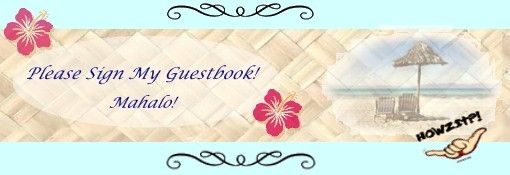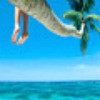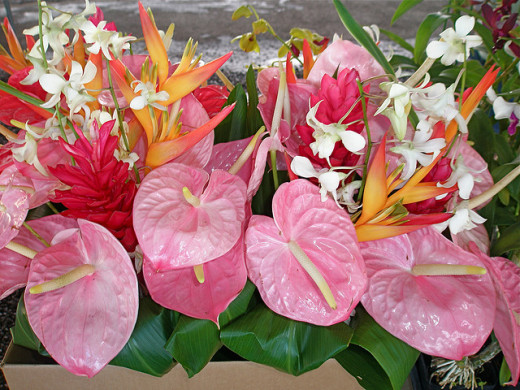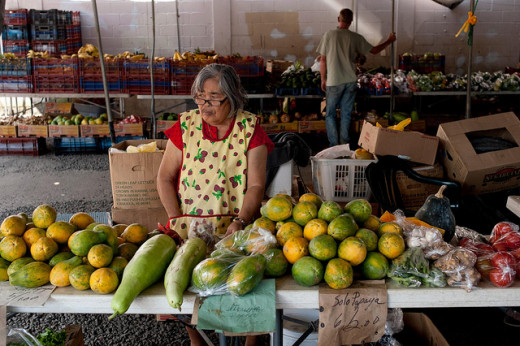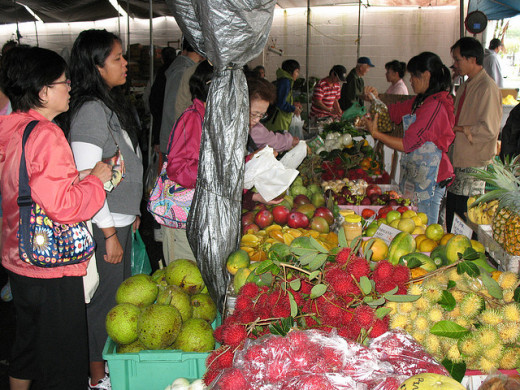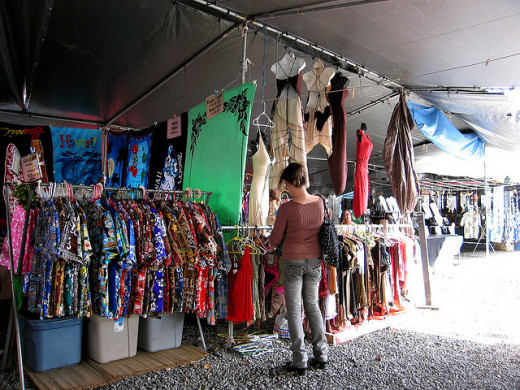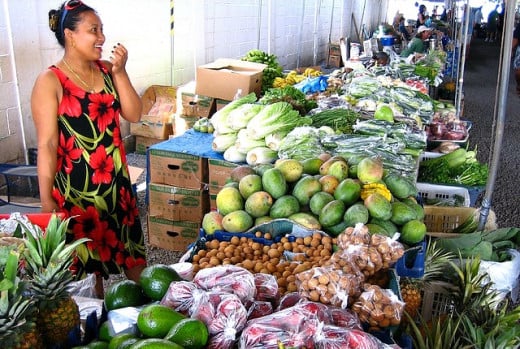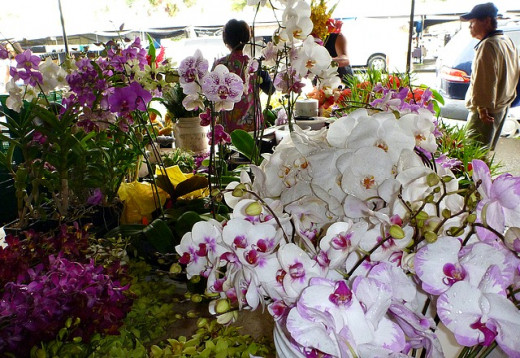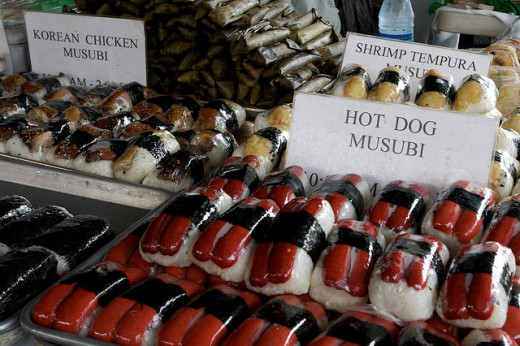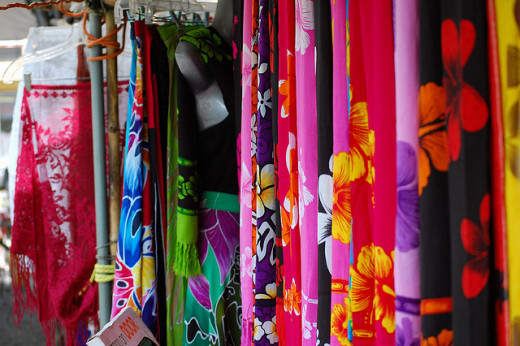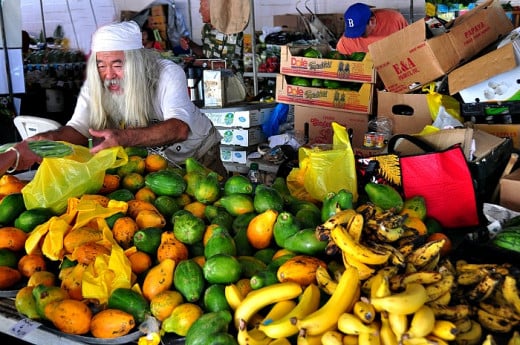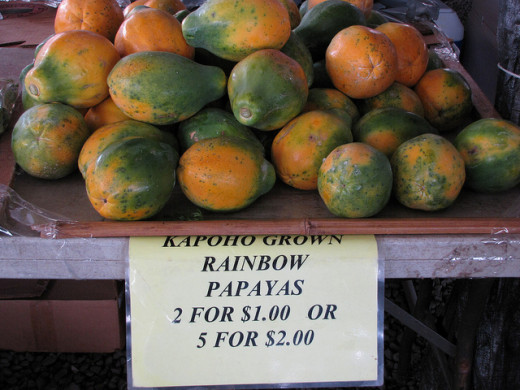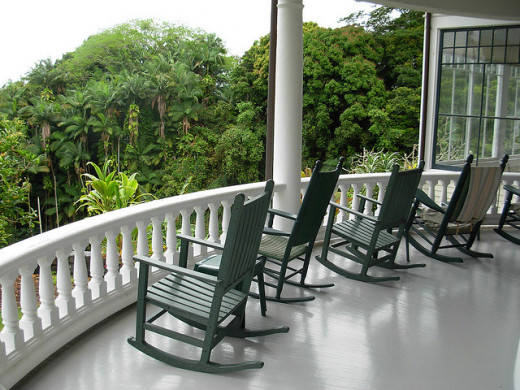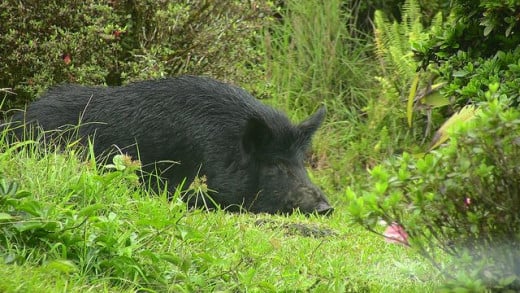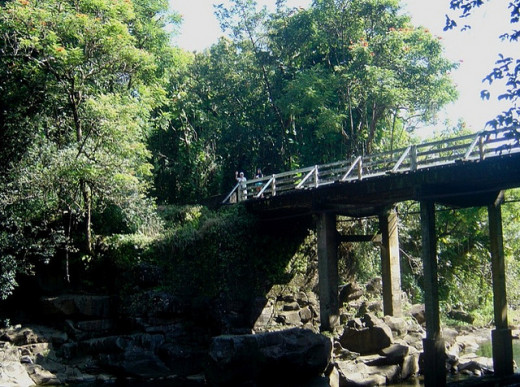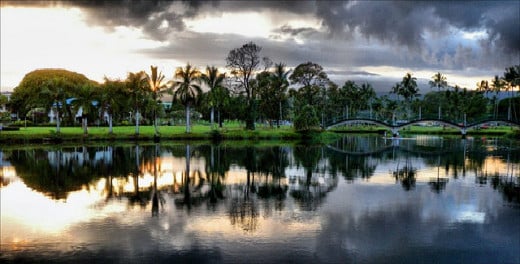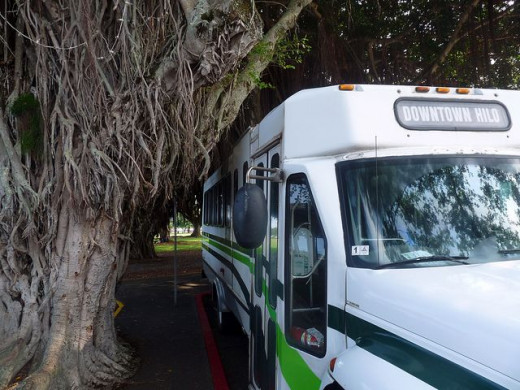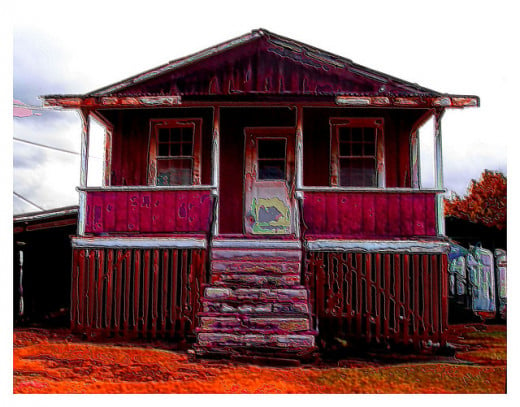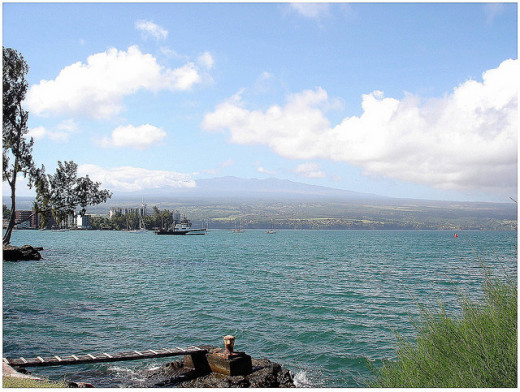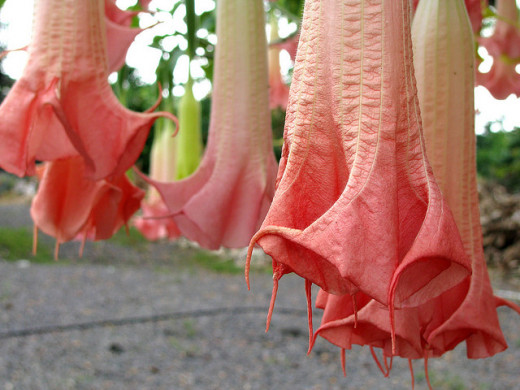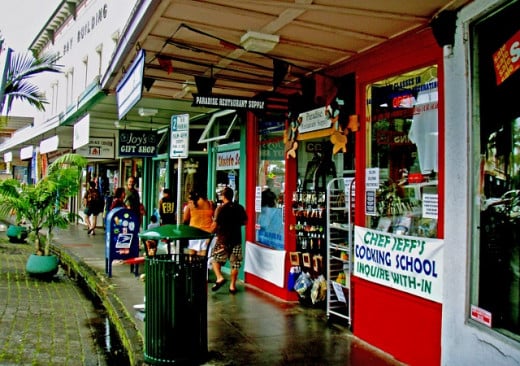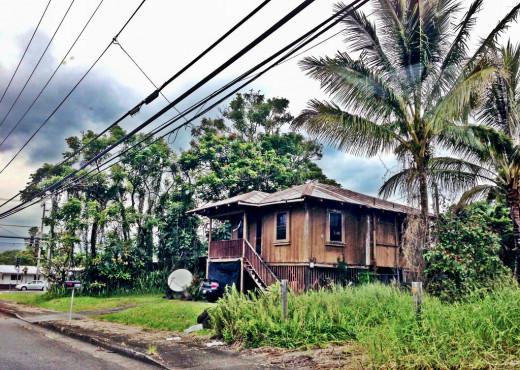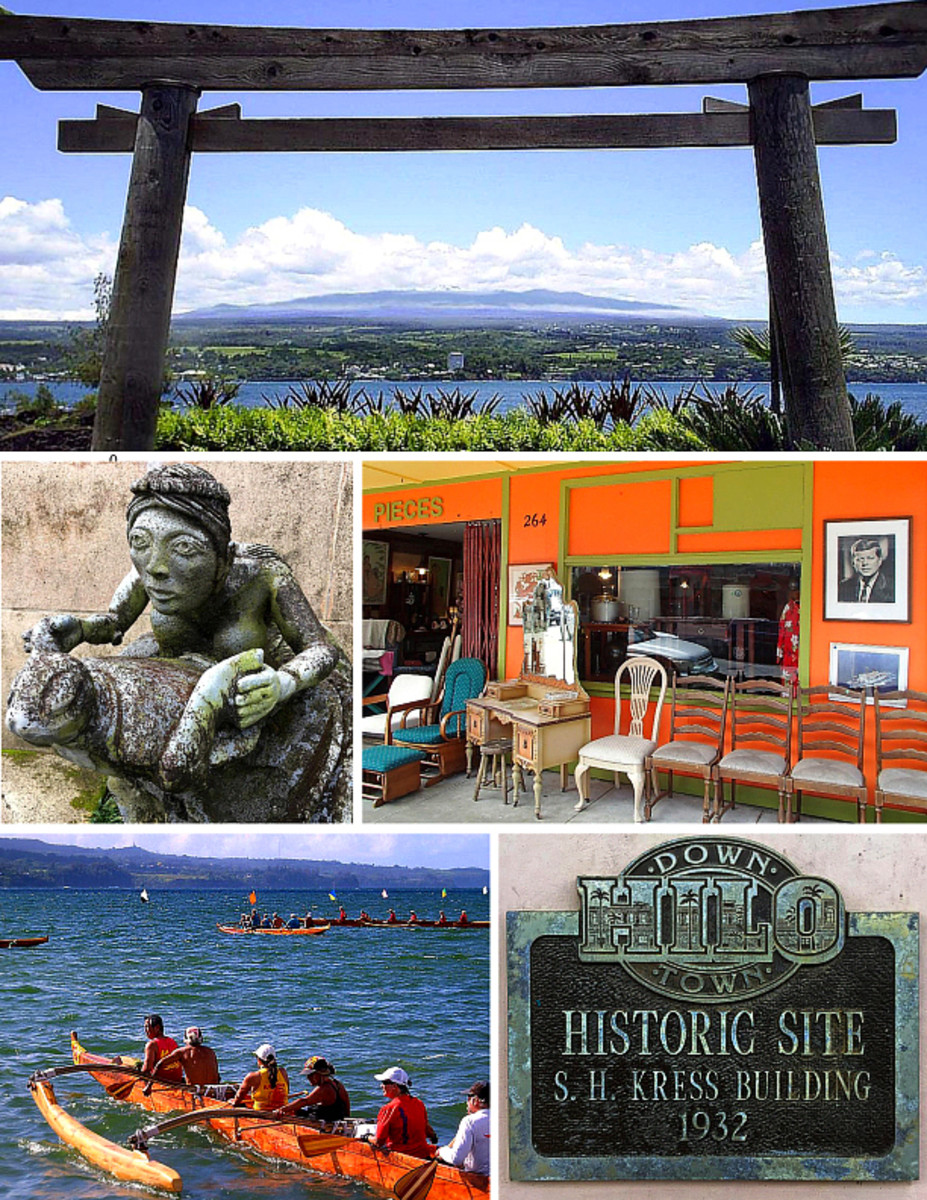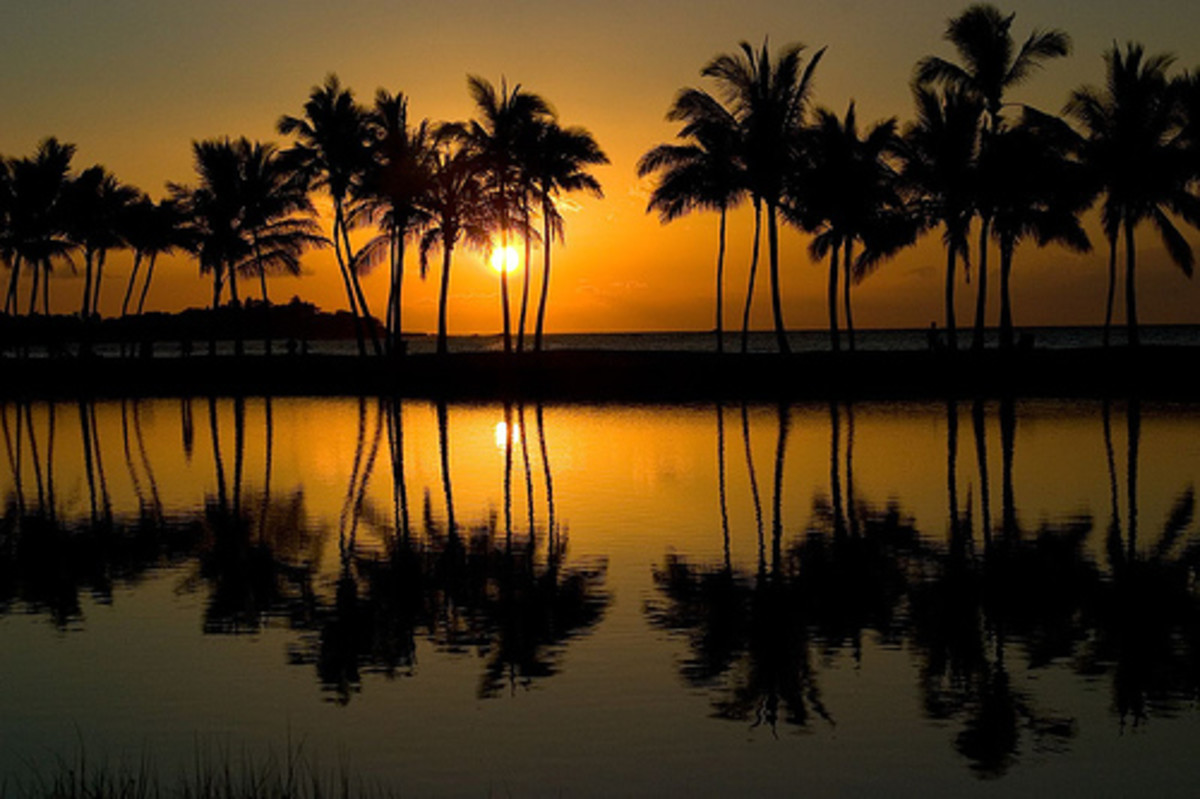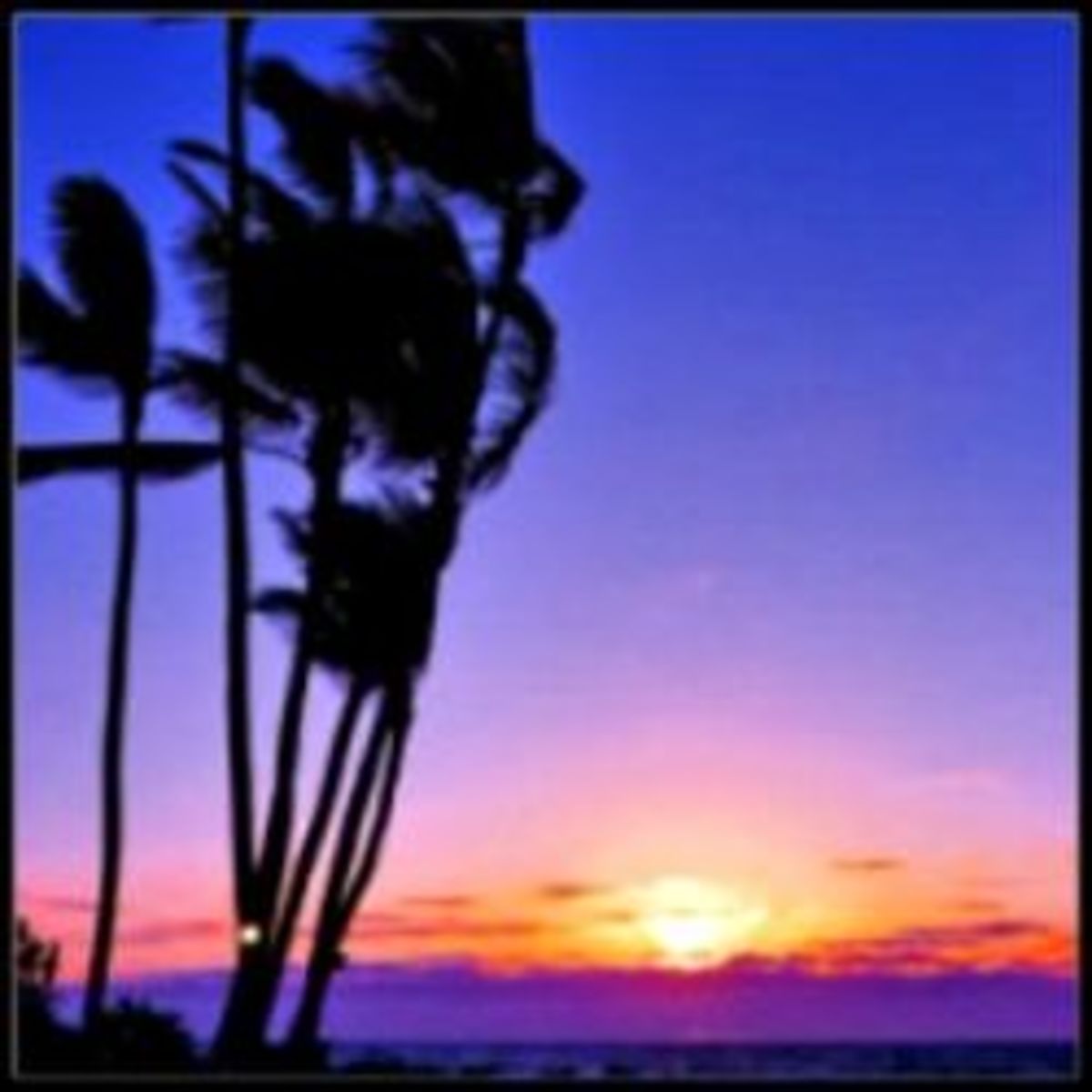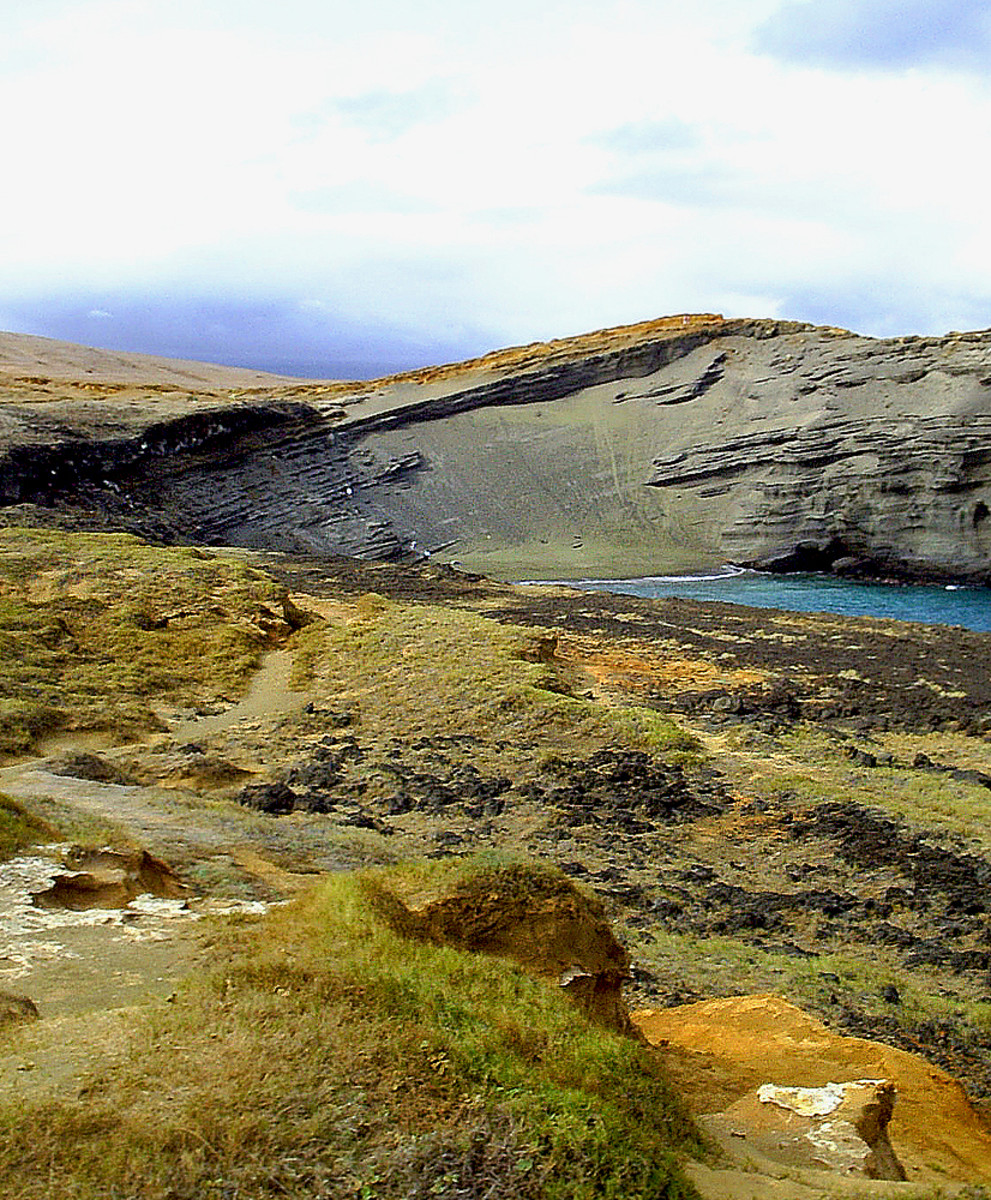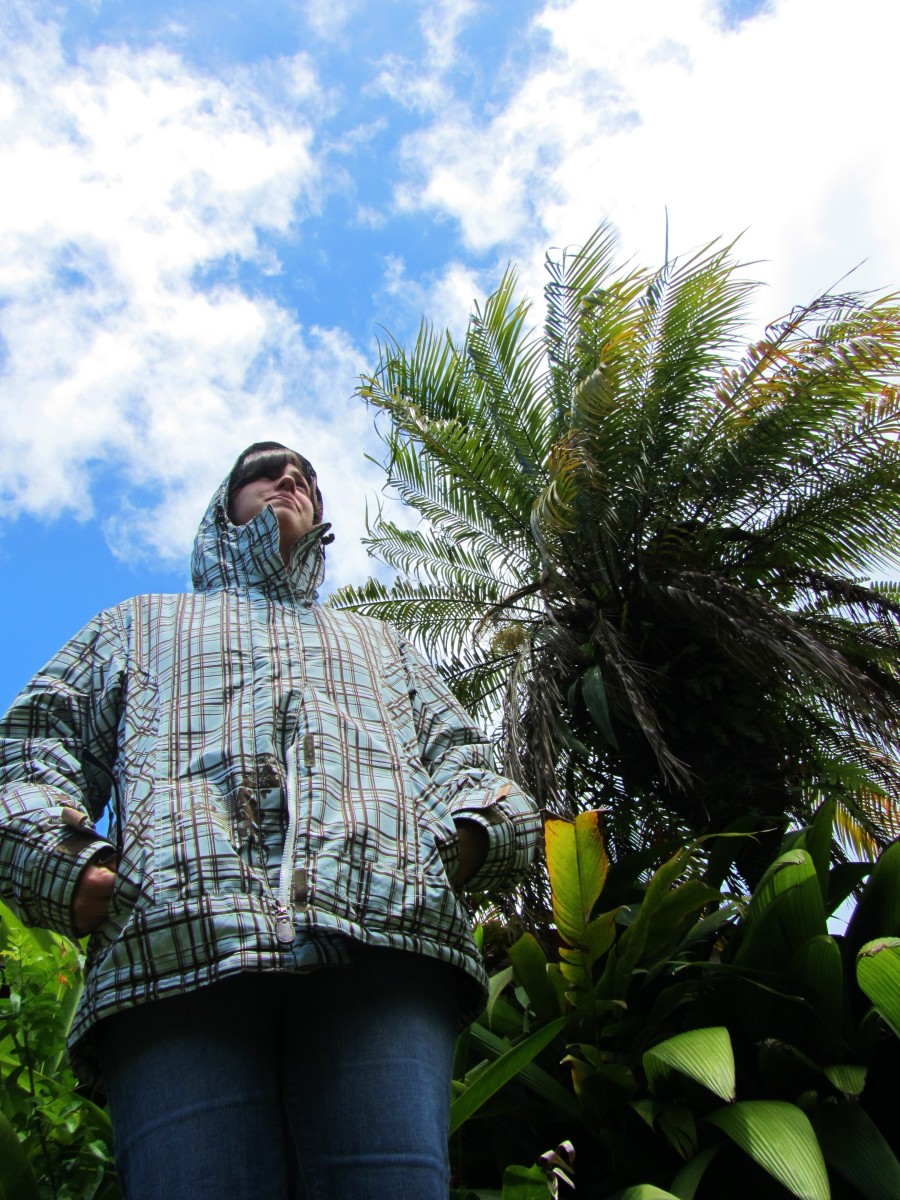- HubPages»
- Travel and Places»
- Visiting North America»
- United States
Big Island of Hawaii - Hilo
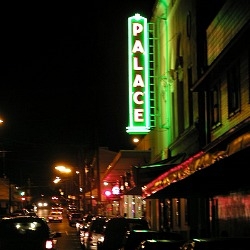
Big Island of Hawaii - Part 3 - Hilo
Aloha! E komo mai!
Hele mai! Hele mai!
Welcome back!
Mahalo for continuing our tour of the Big Island of Hawaii! If you missed Part 1 and 2 of our tour you can catch the buses (lens) you missed at:
The Big Island of HawaiiThe Big Island of Hawaii - Hamakua CoastThe tour is broken up into 6 segments to make it easier to view. Make sure you catch each bus (lens) to visit each part of the Big Island of Hawaii. In this lens we will be covering the capital of the Big Island, the city of Hilo.
This is a Hawaiian Hale (House) - Tradition Requires that You Remove Your Shoes before Entering
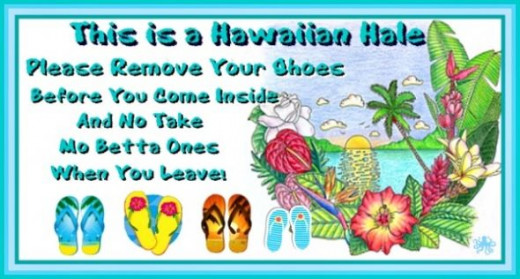
Eh! No Forget!
You Gotta Remove Your Shoes Before You Go Inside
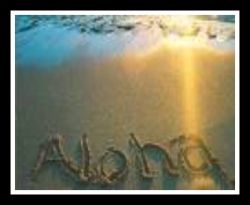
Now That You've Taken Off Your Shoes.....
Kick Back & Relax
It is well worth it to take your time and plan on staying for a while.
There are so many unique and interesting things for you to enjoy while visiting the Big Island of Hawaii. You don't want to just drive around the island without stopping and miss it all!
You will want to slow down and absorb the beauty; slow down and experience the diverse cultures and life styles; slow down and savor the exotic tastes and aromas that the Big Island of Hawaii has to offer.
Each part of the island that we visit has something diverse and unique to experience.
Links to All the Lens on this Tour
Hilo Map
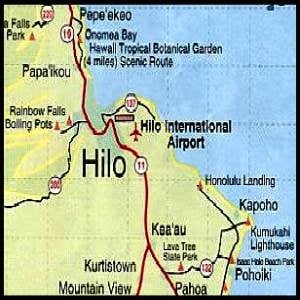
He'eia - by Hapa
Listen to Hawaiian Music by Hapa
Visit the town of Hilo, from your armchair at home, while listening to the sounds of Hapa, Hawaiian music. It will help you smell the salty hawaiian air and help you to visualize the exotic sites in Hilo.
Welcome to Hilo
Hilo Town - The Capital of the Big Island of Hawai'i
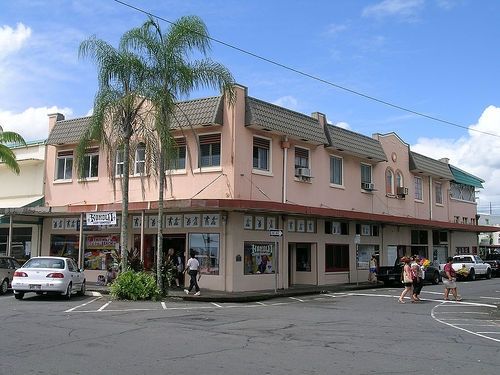
Hilo is the capital of the Big Island of Hawaii, but our "big city" isn't very big, it only has a population of about 41,000, and Hilo is VERY wet.
Hilo is the wettest "city" on earth and has a rainfall of about 120 inches a year. The only place wetter on the planet is the island of Kaua"i.
The good thing is that it is usually warm and sunny during the day as the rain doesn't start until the later part of the afternoon and usually rains into the night.
Hilo is a college town as the University of Hawaii - Hilo Campus is located here, but it has kept it's old town charm that is reminiscent of the whaling days. Most of downtown has been restored and the parts that haven't are being worked on now.
Hilo also has large shopping centers and malls in the newer portions of the city. We use to travel once a month from Kona to Hilo to do our monthly grocery shopping in the "big stores" in the "big city".
Hilo Sites to Visit
Downtown Hilo Building Built - 1922
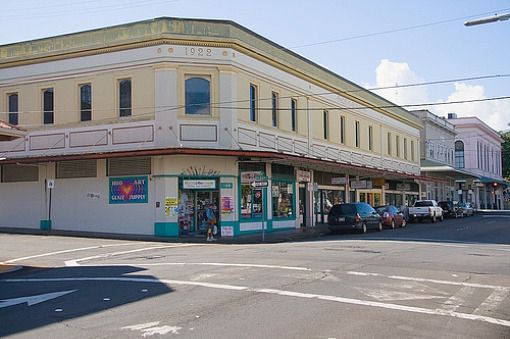
Old town Hilo is still pretty much the same as it always was, with the local restaurants and saloons.The old Dew Drop Inn Chinese Restaurant (replaced by a vegan restaurant) reminded me of something out of "Casablanca" (the old Humphrey Bogart movie).
Cafe 100 on Kilauea Avenue is still there and brings nostalgic memories of a 50's soda shop/diner, but has some of the best, low cost, local food around, with the warmest, friendliest, aloha service you could ever hope for.
This semi-restored old building in downtown Hilo was built in 1922. It is amazing that these old buildings are still standing with the amount of earthquakes and tsunamis they have withstood over the years.
Even though Hilo is not a very big city, it is the biggest city on the Big Island, however, Kailua-Kona is rapidly catching up in population as more and more people move to Kona from the mainland.
This huge influx of mainlander's has caused a dramatic increase in property values all over the island. My own property tax increased 86% in 2009, because of it.
Big mainland and Arab developers are wanting to buy my property (which I will never sell) and the surrounding properties. This is another factor for the real estate values and tax increases on the Big Island.
Tsunami Targets Hilo
April Fools Tidal Wave Devastates Hilo
Hilo is Target of Monster Tsunami Waves
April 1946 Tsunami
There have been many Tsunamis to hit the Hawaiian islands, but none so devastating as the mysterious Tsunami that hit Hilo Town On April Fools Day, 1946.
An earthquake off the coast of the Aleutian Islands in Alaska spawned a series of large tsunami waves. One wave as high as a 13-story building hit Hilo. Others raced across the Pacific, killing dozens and leaving a trail of destruction that stretched to California and even South America.
The earthquake was too small to spawn the huge local wave, and the scientists were baffled by it. They researched for decades trying to figure out what exactly had happened. The leading theory has been that the earthquake triggered an underwater landslide, generating a one-two punch, but it is only a theory as they still do not know for sure.
At the time, they didn't have the technology that we have today that is able to warn the people with sirens to move to higher ground. This devasting monster wave came as a complete surprise and many of the people where too ignorant at the time to recognize the signs of the impending wave.
Before a wave of this magnitude and force hits shore, the tide will begin to recede just as it does with the small waves you see breaking along the shoreline, but magnified 200%.
Many of the people who where on the beach at Hilo Bay when the ocean began receding, ran out to where the ocean had once been, and began gathering the fish that were left floundering on the ocean floor. They had no idea what was coming next and just thought that this was, without a doubt, the easiest pickings they had ever seen!
This Tsunami killed 165 people and wiped out the oceanfront of Hilo Town and parts further inland.
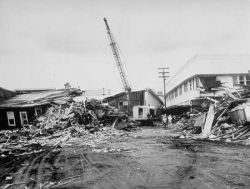
1960 Tsunami Wipes Out Hilo Again!
After the devastation of the 1946 tsunami, the industrious and hard working people of Hilo rebuilt the town and recovered from the 1946 devastation.
Over the years there were smaller storms and smaller tsunamis to take out different smaller areas of the Big Island, but not until 1960 did Hilo get hit and devastated again by another monster wave.
By this time, the Civil Defense had installed the siren system that is in place today that warns people of impending nuclear attack, aircraft attack, earthquakes, volcanic eruptions and monster tidal waves.
I was in school in Kahala, on the island of Oahu, when the sirens began their series of warning wails telling us to evacuate to higher ground. The tidal wave was on it's way to Hilo, they knew that, but they didn't know the magnitude of it and if it would hit Oahu too. We were all loaded into school buses and bused to the top of Tantalus mountain range to wait out the wave.
Meanwhile, in Hilo, the Civil Defense sirens failed and the tsunami warning never came. People were again on the beach unaware of the impending doom. When they saw the receding ocean this time, many began their run to higher ground, but it was already too late.
Since the 1960 tsunami, the people decided not to rebuild again along the ocean front and instead turned it into a park with bicycle paths. The seawall was built to help as a sea breaker for the high surf. It helps some, but not completely. It is impossible to stop these devastating monster waves completely!
While visiting Hilo, go to the Tsunami Museum to see some amazing photos and get some very interesting facts about the Hilo tidal waves.
Then and Now
Along the Waterfront - Across the Street from Hilo Bay
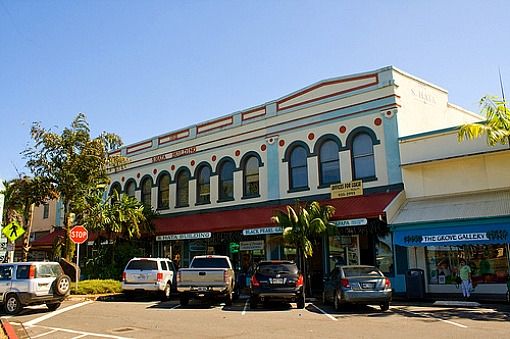
This is one of the restored buildings along the Hilo Bay waterfront. The restoration of many of the old architectural buildings is still a work in progress, but is moving right along. As long as there aren't any more devastating storms, hurricanes, tsunamis or earthquakes, it should all be finished by 2012.
Sunrise - Hilo Bay
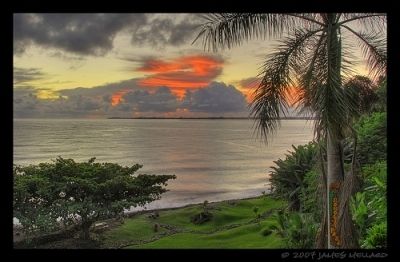
The Hilo Farmer's Market
The Hilo Farmer's Market is the Local Meeting Place in Hilo
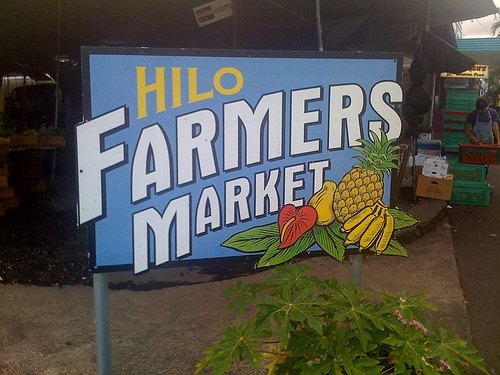
There are always so many things to see and do in Hilo, but one of the most colorful is the local Hilo Farmer's Market.
It is THE PLACE to pick up fresh Hawaiian and Asian local produce, flowers, plants, baked goods, sushi, musubi, fish, box lunches, arts and crafts.
It is also THE PLACE for a social gathering where neighbors and friends can "talk story" (catch up on the local gossip), exchange goods, and make party plans for the weekend.
The Hilo Farmer's Market - Open every Wednesday and Saturday - 7 a.m.-3 p.m.
Coconut Vendor at the Hilo Farmer's Market
Fresh coconut and coconut water is always a refreshing treat at the Hilo Farmer's Market. Tourist that happen upon the market by chance are always amazed at agility of the local merchants when it comes to opening a coconut!
Fresh Coconut Water, Anyone?
Common Wares Seen at the Hilo Farmer's Market
Click thumbnail to view full-size









To Market To Market To Buy A Fat Pig: Getting Produce to the Hilo Farmers' Market
Hilo, Hawaii's Farmers Market with Jennifer Thompson, 1 of 5
Boiling Pots
Boiling Pots Above Rainbow Falls
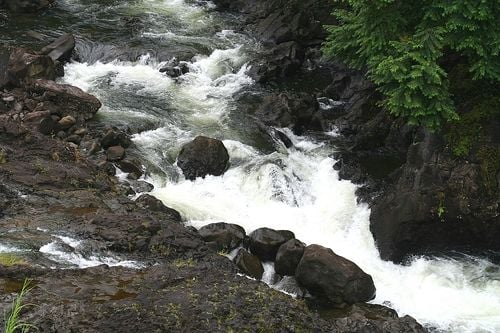
Boiling Pots and Pe' epe'e Falls
A couple of miles upriver from the famous Rainbow Falls is Pe' epe'e Falls and Boiling Pots.
Boiling Pots received it's name from the turbulence in the river connected by underground flows, or cascades, as it rushes over Pe' epe'e Falls.
The water rushes over century old lava rocks and through lava tubes, forming rapids that roll, bubble and boil, just like a boiling pot on the stove, as it makes it's way downstream.
This boiling action is due to the steam vents moving through the lava tubes underground that churn the rushing water. The topography is constantly changing due to the volcanic action.
You can hike fairly close to the river on a well beaten path, but the closer you get, it can be downright dangerous, as the trail gets extremely slippery from the rain and the waterfalls. There have been many drownings from inexperienced visitors to the area who have slipped into the bubbling, turbulent water rushing through the lava tubes moving rapidly down river.
During rainy season, it is best to avoid the hike completely as the water rises very high and becomes extremely dangerous.
Pe'epe'pe Falls
Pe'epe'pe Falls - Feeds into Rainbow Falls
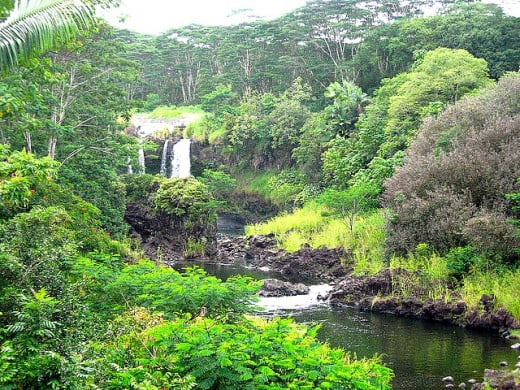
Rainbow Falls
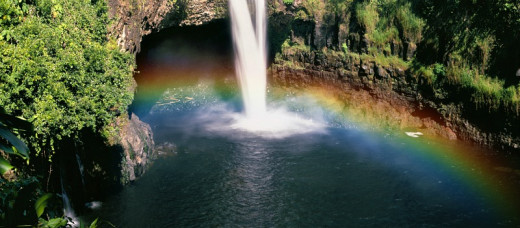
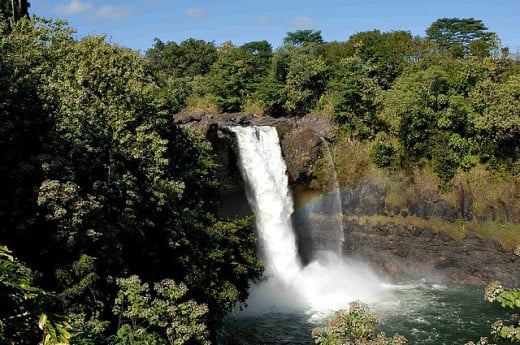
Rainbow Falls
Before we leave Hilo and head towards Pahoa, there are a few more quick stops, Rainbow Falls being one.
The drive to the falls is just minutes out of Old Town Hilo, and the walk is also minutes; a much added relief to those that thought the hike to Akaka Falls was a bit strenuous.
Rainbow Falls is known for its show of double rainbows over the falls. When I have usuallyseen the double rainbows it has been either at sunrise before the mist has burnt off by the sun, or in the late afternoons when the rains begin and the sun is at just the right angle to catch all of the prisms of the rainbow.
There they are - double rainbows - over the double falls. The mystical presence of the aumakua (spirit) is felt while basking in the light and serenity of the falls.
Rainbow falls are surround by the wild yellow and white ginger flowers that are prevalent in Hawaii and again the scent is intoxicating when mixed with the vapors cascading off the falls.
There is a legend about Rainbow Falls that we pass down from generation to generation. The story is that Hina, the mother of Maui, still lives in the cave behind the Falls. It is a long story, but you can go to this link to read a shortened version about Maui, Hina and Kuna
Note: The letter "T" that is used in this version, comes from the Tahitian language. We are theoretically supposed to be of Tahitian descent. The letter "T" is no longer used in the Hawaiian language. It has been replaced with the letter "K".
On the island of Oahu you will hear "Tutu Kane" (Grandfather) or "Tutu Wahine" (Grandmother), or just "Tutu". However, the correct words, in the Hawaiian language, are actually "Kupuna Kane" (Grandfather), "Kupuna Wahine" (Grandmother) or "Kupuna" for Grandparents. "Kuku" is the correct shortened version.
Hilo Hawaii - Rainbow Falls 2014 Hurricane Iselle
Kayaking Rainbow Falls - Watch the Falls Closely to See the Tiny Kayaks Going Over the Falls
The Witching Hour at Rainbow Falls
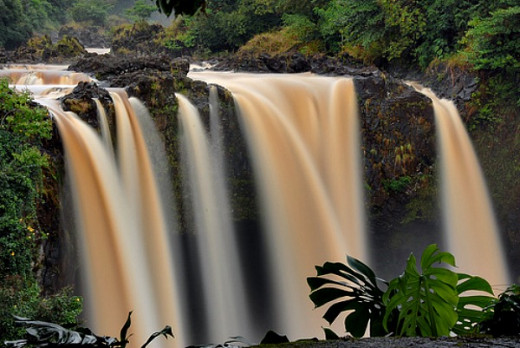
Falls Along Wailuku River - Wailuku River is the Longest River in Hawaii
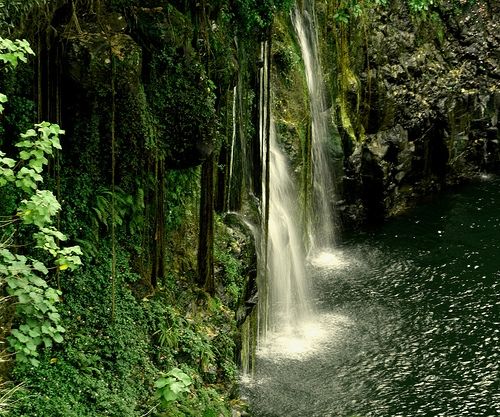
Historic Banyan Drive
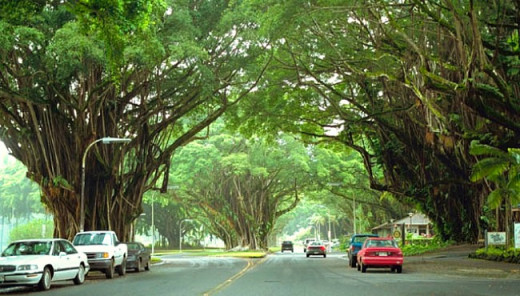
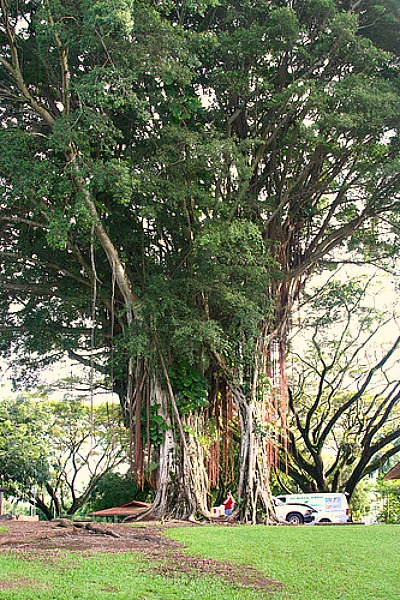
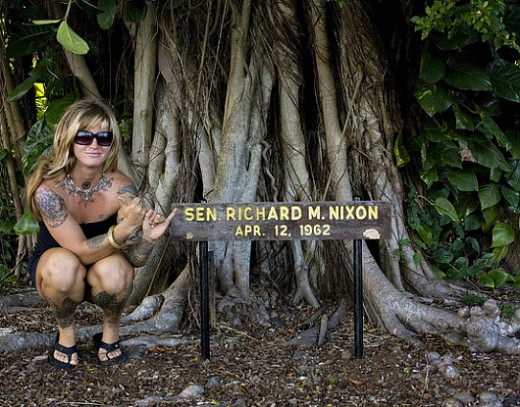
Historic Banyan Drive - Hilo, Hawaii
The historic Banyan Drive is, of course, named because of the 50 gigantic banyan trees with long aerial roots dangling from their limbs, which line the drive in Hilo. Banyan Drive is also called "Hotel Row" as this is where the major of the *Hilo hotels are located.
These huge banyan trees create a shady canopy over the road and the limbs and roots of the banyan trees are filled with wild orchids and wild ferns.
These trees were all planted in the late 1930s up until the early 1950s by celebrities, including Amelia Earhart; President Franklin D. Roosevelt; movie mogul Cecil B. DeMille; jazzman Louis Armstrong, baseball hero Babe Ruth, Senator Richard and wife, Pat Nixon (he wasn't a President yet) and England's King George V.
*Note: Because there is so much rain in Hilo, many visitors from the mainland who are not use to the damp air and humidity, find the Hilo hotels "old, musty, damp and oppressive".
Even though the hotels are in continuous repair, there is no escape from the dampness of the jungle-rain forest. If this type of weather is offense to you, I suggest you find a bed and breakfast outside of the Hilo area.
Another suggestion is to turn on the air-conditioning in the room. I have met tourist that complained, yet "didn't think to turn on the AC".
Fishing Along Banyan Drive
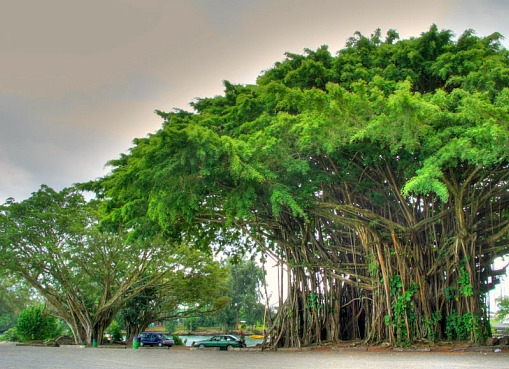
Queen Lili`uokalani Gardens
Lili`uokalani Gardens - Hilo's Japanese Garden
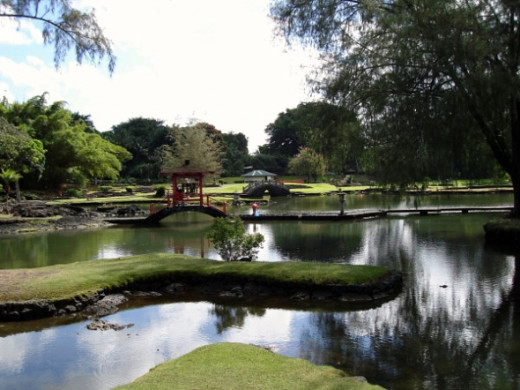
At the far end of Banyan Drive is an authentic Japanese garden, named the Queen Lili`uokalani Gardens, that was built in the early 1900s as a memorial to the immigrant Japanese who developed the old Waiakea Sugar Plantation The garden was named in honor of our last reigning monarch, Queen Lili`uokalani.
Queen Lili`uokalani was imprisoned in her own jail at Iolani Palace on Oahu in 1893, by the order of President Grover Cleveland.
In 1898, President McKinley signed the McKinley Act and Hawaii was annexed to the United States.
Queen Liliuokalani was forced to give up her throne and Hawaii became a Territory of the United States. While President Clinton was in office, he signed an apology to the Hawaiian people for the wrongs committed against them by the U.S. government.
Hawaii and The Rise of Kamehameha and the End of Lili`uokalani
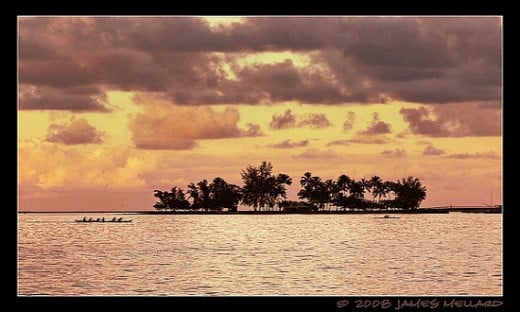
The gardens consist of 30 acres adjacent to Moku'ola, the "healing island", which is now known as Coconut Island, where you can cross a narrow footbridge to get from the park to the island. You will still see the fishermen throwing their surround nets out over the water to catch fish, or casting their lures into the ponds. This is a beautiful, tranquil spot for a picnic in the the noon sunshine.
The Japanese Gazebo - Lili'uokalani Gardens
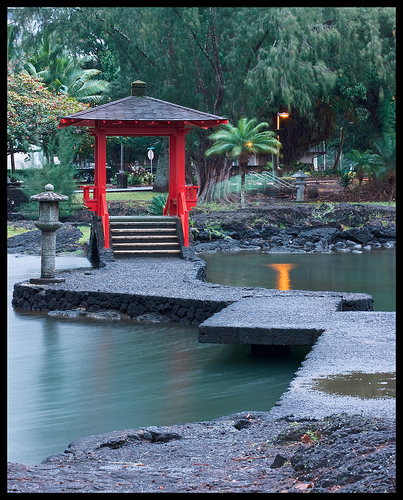
Japanese Bridge in Liliuokalani Garden
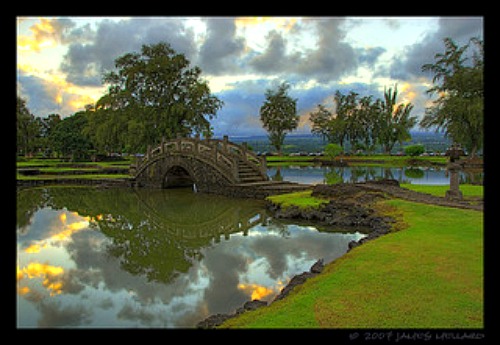
Quotes from Queen Lili`uokalani - Hawaii's Last Reigning Queen who is still loved and respected by her people, the people of Hawaii Nei
Hawai'i's Last Queen Speaks of Aloha
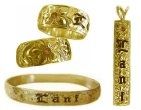
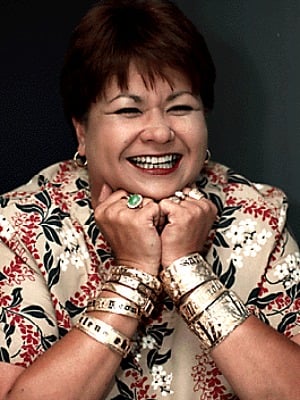
Hawai'ian Heirloom Jewelry
The History of Hawaiian Heirloom Jewelry
The gold engraved jewelry that is enameled with black enamel calligraphy lettering, known as Hawaiian Heirloom Jewelry is a much beloved style of jewelry in Hawaiian tradition.
The jewelry dates back to 1877, when Prince Albert, consort and husband to England's Queen Victoria, had died. During the Queen Victoria's time of grief, only mourning clothes and black-accented jewelry were acceptable apparel at the royal court. The jewelry was designed by Queen Victoria to accent her mourning dress.
This gold jewelry, accented with black jet or enamel and carved with floral, vine or scroll designs became the height of fashion in England. These pieces came in the forms of rings, broaches, pendants and bracelets.
At the time of the Victorian Jubilee of 1887 in England, Queen Victoria invited her friends, Queen Kapiolani and Princess Liliuokalani to attend the celebration.
The Hawaiian Royalty were presented with gifts of solid gold bracelets with their names engraved in Old English, calligraphy, lettering and filled with black enamel. The Queen and Princess were so enthralled with these simple, yet unique and beautiful works of art, that they had similar bracelets made as gifts for other members of the Hawaiian Royalty for presentation upon their return.
The future Hawaiian Queen had the bracelets made to her exact specifications. They embodied her mixed feelings of sympathy for the English queen's loss, her own feelings of love and loyalty to her home in Hawaii, and her duty to the throne as royalty.
The bracelets she designed featured an intermingling of both the black enamel used in the English mourning items and engravings representing the `ahu`ula, feather capes, which are the symbols of Hawaiian royalty.
This combination of the Victorian English mourning and the Hawaiian monarchy forms the basis for Hawaiian Heirloom Jewelry as it is known today....
All of the magic, spirit, pride and heritage of the Hawaiian people becomes your own when you wear our cherished Hawaiian Heirloom jewelry, with the beauty of it's classical design.
The saying in Hawaii is, "To own a piece of Royal Hawaiian Heritage Jewelry is to carry the aloha spirit of Hawaii with you always". It is an honor to receive a piece of this jewelry enamel with your Hawaiian name.
My Hawaiian name (Momi o' Lokelani, is kind of long to fit on a ring so I wear it on my Royal Hawaiian heritage bracelet. On my ring I chose to have my husbands shorter name, Keoni.
The Kukui Nut Tree - Hawai'i's State Tree
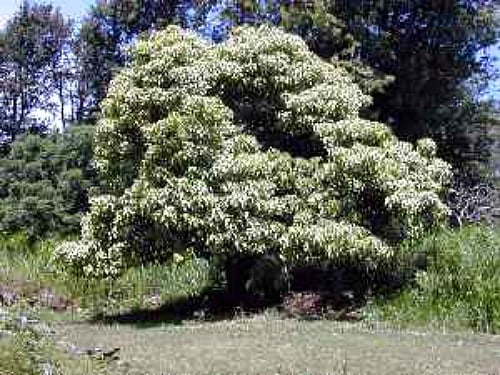
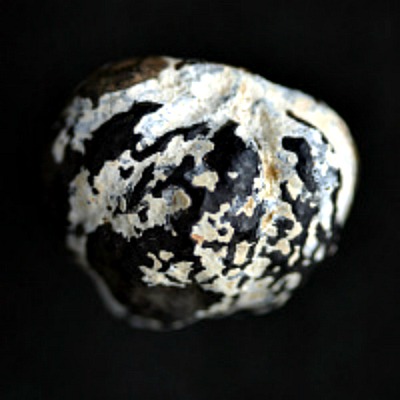
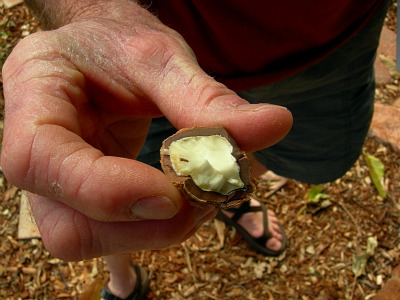
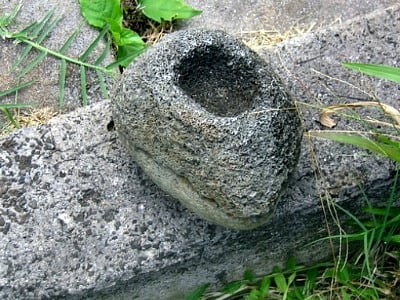
The kukui (pronounced coo-coo-ee), nut tree can be seen growing on all of the Hawaiian Island, not just in Hilo, although Hilo does have some very old and very large trees.
The kukui nut is a dark, rough, grooved nut that comes from the kukui nut tree, or candlenut tree, ( Aleurites moluccana), of the spurge family. It is also the state tree of Hawaii.
A little bit of the kukui nut oil (extracted from the kukui nut) was poured into the stone basin of the lamp and a strip of twisted kapa cloth was twisted, dipped into the oil, and used as the wick.
In ancient times the soft wood was carved out for canoes; the gum from the bark of the tree was used as dye to paint the kapa cloth; the shells of the black kukui nuts and the roots of the tree where used to make black dye.
All parts of the tree were used both medicinally and as beauty treatments. Kukui nut oil, was rubbed on the skin to keep it soft and to protect the skin against the elements such as the ocean salt, the sun, and the wind.
To this day, we still use the roasted nut sparingly, mixed with Hawaiian salt, as a very tasty seasoning called inamona on a raw fish dish called poki, and on other fish dishes as well. Every part of the tree is still used effectively for medicinal purposes.
The Kukui nut tree is really quite precious with it's multitude of uses
The fresh oils of the kernel is still used in modern beauty treatments as a body lotion, skin cleanser and moisturizer, while the shell is ground finely and added to products as an exfoliate.
.In skincare, kukui nut oil is a luxuriant and versatile oil. The skin absorbs it quickly while it moisturizes and softens the skin. It doesn't leave an oily slick. Using kukui nut oil along with the gel of the aloe plant, will heal just about any skin condition.
The silvery, light green leaves and the small white flowers are either woven or stung into leis and are representative of the island of Moloka'i. In all of the parades today, the Pau Riders still use the kukui blossoms to represent that Island.
Kukui Nut Oil - by Oils of Aloha
Kukui Nut Oil is beneficial to all skin types and and works exceptionally well on dry skin.
It is also works amazing well on epidermal problems such as eczema, psoriasis, and acne. It is a very soothing and healing oil that repairs the damage of sunburn, especially when used together with the fresh gel of the aloe vera plant.
If you have any of these skin afflictions you will be pleasantly surprised at the way your skin feels after applying Kukui Nut Oil.
I like that The Oils of Hawaii Kukui Nut Oil is a transparent, low-viscosity oil that is quickly absorbed into my skin.
Oils of Hawaii Kukui Nut Oil is an organically grown, bio-degradable and a wholly natural product. It contains vitamins A, C & E ( all anti-oxidants) which help create and protect healthy skin tissue.
It is a natural source of linoleic and linolenic fatty acids, essential elements for healthy skin.
Hula Dancers Wearing Kukui Nut Leis
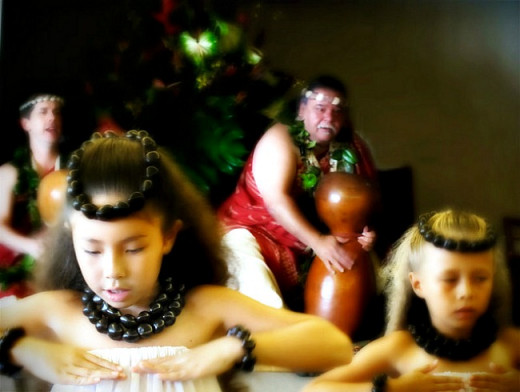
Kukui Nut Jewelry
Make Sure They Are Authentic Kukui Nuts from Hawaii
Traditionally, the rough nut was smoothed down with a rasp, sanded and then highly polished, with either it's own oil or coconut oil, and turned into jewelry.
In ancient times, the kukui nut jewelry was only worn by the Ali`i, Hawaiian Royalty. Years ago the brown kukui nut was not as common as the black kukui nut and the ivory colored kukui nut was scarce. Now, all the colors can be found, but the black kukui nut leis are the most popular.
In the old days it was rare to see someone wearing a brown kukui nut lei or bracelet. My daughters and I have light brown kukui nut pendants that were hand carved by my grandfather over 100 years ago.
Mine is carved with the piha-`ekelo, mynah bird, and my daughters are carved with flowers; the plumeria, bird-of-paradise and the hibiscus, the state flower. They are things of beauty and the color is very rare.
Buyers beware that many of the ivory colored kukui nut leis, or necklaces DO NOT come from Hawaii. They come from the Phillippine Islands and are called "lumbang" in Filipino. Don't be fooled into buying "rare kukui nuts" as they are not rare in the Philippines. Be aware when buying kukui nut jewelry of colors other than brown and black, as they may be fakes.
Often the fair colored nuts have been bleached or dyed or both bleached and dyed to achieve the color. Some are resin created fakes, and are not "natural" nuts at all. When they come from the Philippines you should be paying a much more reasonable price, not high dollar, for these artificial nuts.
Be sure to read what you are buying online and find out where the nuts are being harvested, and if they are being harvested at all.
Visit Hilo's Museums & Gardens
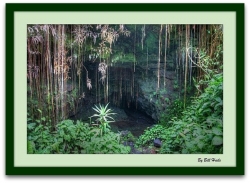
Kaumana Caves Park
The Kaumana Caves are actually lava tubes that are a fabulous place for the casual tourist and for the more advanced spelunkers to explore.
The lava tubes are located north west of Hilo on Saddle Road (Kaumana Caves Drive). The caves are a 25-mile long lava tube with several tunnels off of the main tube that was originally created by the Mauna Loa volcanic eruption of 1880 - 1881.
Part of the lava tube has caved in creating a natural skylight in the tube. For anyone interested in cave exploring, this is a great place to go while in Hilo on the Big Island. Remember to bring a strong headlight or flashlight.
Shipman House Bed and Breakfast Inn Hilo, Hawaii
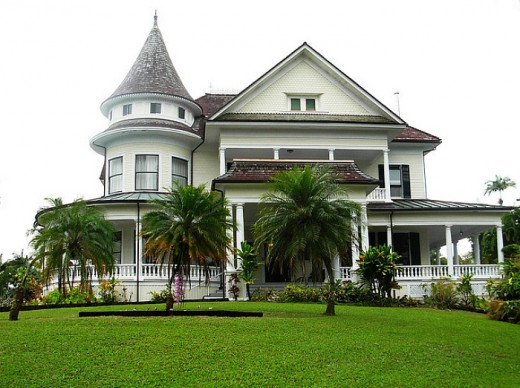
Where to Stay in Hilo
Rather than staying in a hotel, I love the Shipman House Bed & Breakfast. It was once a local museum, but the Shipman's who currently own it opened it up as a bed & breakfast and I am so glad they did. The place is enchanting.
The Shipman House is the last of authentic historic Victorian Bed & Breakfast homes on the Big Island of Hawaii. It is currently owned by a descent of the original Shipman family who will greet you upon arrival with the warmest aloha.
The house is located on 26 acre Reed's Island, a historic neighborhood just across a wooden bridge from Historic Downtown Hilo. So close to town, yet you'll feel like you're miles away.
i feel like I have stepped back in time when visiting the Shipman House. It is Hawaii's last privately-owned Victorian mansion and full of Hawaiian history and old world charm. It even has a Steinway Grand piano. The inside of the home will bring you back to the glorious Victorian days of the Hawaiian monarchy.
Walk the extensive grounds and feel the magic surrounding you from the gardens full of exotic flowers and tropical fruit trees to the rainforest jungle. If you are a malihini (newcomer to Hawaii) or a Kama'aina (local resident) you will fall in love with this charming place.
Shipman House
131 Ka`iulani Street
Hilo, HI, 96720, USA
innkeeper@hilo-hawaii.com
(808) 934-8002
Sites Around Hilo
Click thumbnail to view full-size









Merrie Monarch Hula Competition
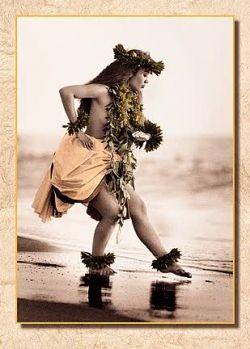
Merrie Monarch Festival
The Merrie Monarch Festival is a week long festival that is one of the largest events celebrated every year in Hilo, during the month of April.
The festival is a non-profit hula competition performed by students of the art of hula.
The dancers study all year long in preparation for this event. Students from all over the world come to Hilo every year to join in the competition and celebration of this cultural event.
The Merrie Monarch Festival was first started over 50 years ago (1963) as a tribute to the memory of King David Kalakaua, who was known as the Merrie Monarch.
King Kalakaua came to the throne of the Hawaiian Kingdom in 1874 and reigned until his death in 1891. He was a patron of the arts, especially music and dance.
The reason the festival was first started by the Hilo Chamber of Commerce, was to "preserve the Hawaiian culture and to perpetuate and promote the art of the Hawaiian hula through education".
Merrie Monarch Kahiko (Ancient Style)
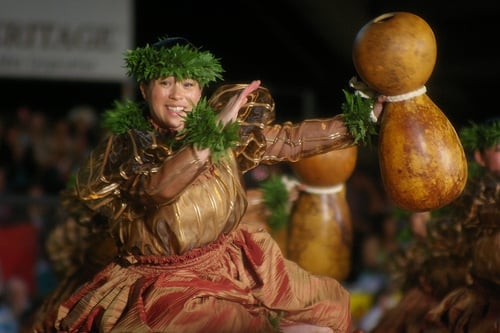
2014 Merrie Monarch Opening Protocol - Hoolaulea Welcome to Waka Huia - New Zealand Maori
1st Place Merrie Monarch 2014 - Hula Kahiko
1st Place Merrie Monarch 2014 - Wahine Auana (Storytelling) Hula by Hula Halau O Kamuela Troup
Miss Aloha Hula 2014 - Ke'alohilani Tara Eliga Serrao - Kahiko Hula
2014 Merrie Monarch - Ke Kai O Kahiki - Men Kahiko Hula
2007 Merrie Monarch Hula Festival Hilo Hawaii - Halau O Kekuhi
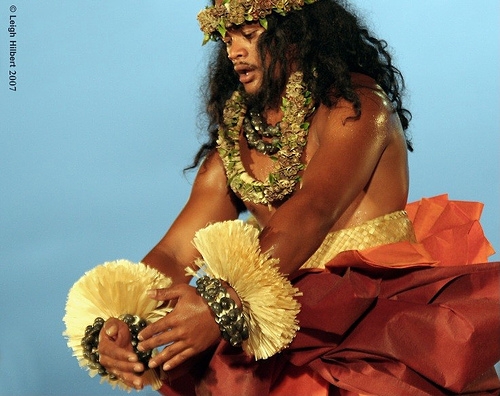
Big Island of Hawaii - Part 4
Thank you for visiting Hilo with us on our Circle Island Tour of the Big Island of Hawaii.
Please continue with us to Big Island of Hawaii - Pahala & the Volcano Area - Part 4 of our tour.
This next part of the tour is very unique and exciting.
Please Sign the Guestbook
